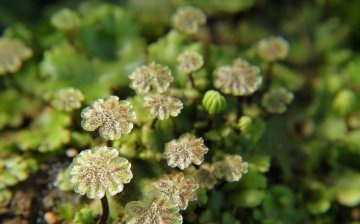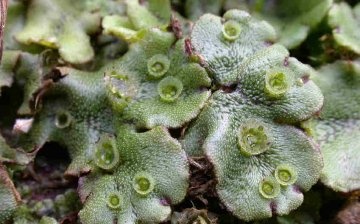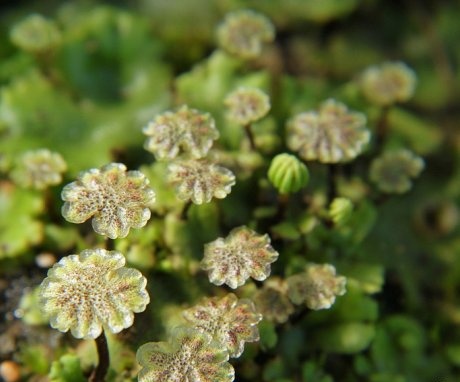Marshallia is a perennial weed on your site
The negative consequences of the appearance of the marshchanka are that it grows very much, covers the earth with a solid carpet. As a result, marching does not allow oxygen to penetrate to the roots of garden plants and flowers and they do not receive the nutrients they need. This moss hardly interferes with large plants. But young seedlings and new tender seedlings may die. The marching is especially dangerous for species of small alpine flowers.
Content:
- Description of the march
- Methods of dealing with marching
- Prevention of the appearance of a marchion
Description of the march
Marshallia is a type of liver moss. Belongs to the Marshantsiye family. The marchion has about 50 types. This is a perennial plant that grows in the form of emerald lobed leaves, they spread along the surface of the soil, have roots called rhizoids, with their help the plant can even attach to water. On the upper surface of the leaves, cups are visible, where brood buds are located, they fall off adult plants and young shoots grow from them. Antheridia (male flowers) appear on special outgrowths, which may consist of a scutellum and a thin stem. Archegonia (female flowers) are found on other outgrowths that look like an asterisk on a leg.
In the wild, marshchant grows in temperate zones - it loves shade and an abundance of moisture, it can grow on rocks, on the banks of streams, on old fires.
She likes land that is acidic. The marshall can get to the garden plot together with the plants sent from Holland or Poland. Since she loves moisture, in rainy weather, the entire area can be covered with plants, even if it is well lit, since with rains the earth becomes compacted and acidity increases.
Methods of dealing with marching
The most popular weed control methods are:
- If only marshall grows on a large area, then it is taken out with copper sulfate. Using herbicides Roundup and Tornado help little to destroy it, since it reproduces by spores, and when using herbicides, useful garden crops can die.
- Tear down the march manually, making sure nothing remains. Then use a cultivator to loosen the soil, as moss likes compacted soil. Determine the acidity of the soil. To do this, cook a solution of leaves currants or cherries, cool it down. Put some earth in it. If the solution turns red, then you have acidic soil. If the solution turns green, then you have neutral soil. If the solution turns blue, then the soil is moderately acidic. You can do the soil response test differently. Collect land from different parts of the site. Sign where you got it from. Place the soil from the container in 1/2 cup of vinegar. If you see bubbles or fizzes, the earth is alkaline. Next, pour half of baking soda into another glass and pour water almost to the top, place the earth. If the ground sizzles or bubbles, then it is sour.
- Pour in ash and lime in the soil to reduce acidity, then mulch with highly crushed bark and cut grass or peat chips and grass. Mulch so that light does not fall on the moss, then the marching will grow poorly. For a rock garden, take peat as mulch, as it heats up in the sun and dries the marchion. Then add lime again.
- Marshants like open spaces that are shaded and humid, so plant mustard, meadow clover, peas, rape. They grow and cover the area with a solid carpet. Plant your garden crops directly into these green manures by making holes with a garden drill. When the seedlings rise a little, you can mow the green manure and mulch the plants with them. In the fall, after harvesting, sow green manures again, you can do this before winter. So you will improve the site.
- Change the topsoil, remove the ground with a marching with a wide knife, hoe, flat cutter.
- Cover the area with black plastic wrap and wait for the moss to completely disappear.
- Very early in the spring, pour boiling water over the ground with the addition of potassium permanganate and copper sulfate.
Prevention of the appearance of a marchion
Conditions in which marshall grows well:
- Increased acidity of the earth.
- Waterlogging of the soil.
- Overabundance fertilizers.
Therefore, you need to properly water the plants, make sure not to apply more fertilizer than necessary. Make good drainage in the area. Monitor the acidity of the soil and add ash, dolomite flour, if necessary.
More information can be found in the video:













